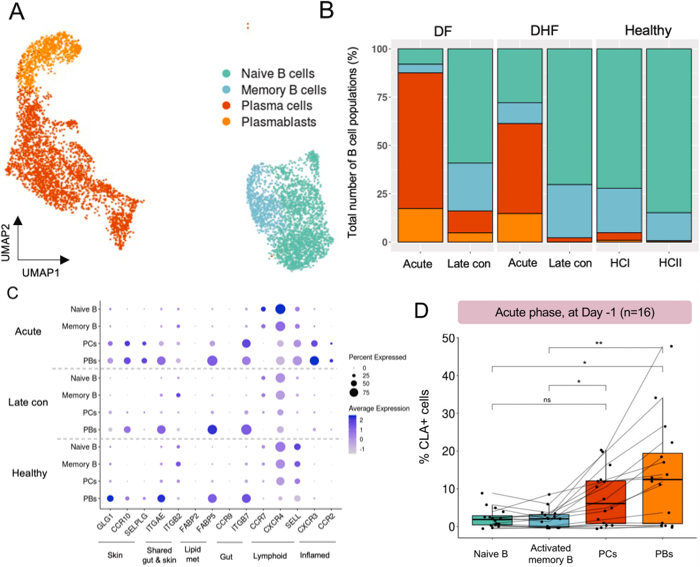Single-cell RNA sequencing reveals the expansion of circulating tissue-homing B cell subsets in secondary acute dengue viral infection

In the battle against dengue virus (DENV), understanding our body’s defense mechanisms is crucial. While the role of antibodies produced by various B cell subsets has been widely researched, the contribution of tissue-homing B cells to antiviral immunity remains less understood.
A groundbreaking study, recently published, sheds light on the behavior of B cell subpopulations in patients with secondary acute dengue viral infections. Using advanced techniques such as single-cell RNA sequencing (scRNA-seq) and flow cytometry, researchers analyzed B cells from peripheral blood samples of DENV-infected patients. They discovered that plasma cells (PCs) and plasmablasts (PBs) were predominant during the acute phase of infection. These cells, which expressed proliferation, adhesion, and tissue-homing genes, including SELPLG—a marker for skin homing—highlight the sophisticated nature of our immune system.
Further analysis revealed significant upregulation of cutaneous lymphocyte-associated antigen (CLA) in these cells, suggesting a targeted immune response. Additionally, these cells showed the highest clonal expansion and tissue-homing gene expression, pointing to their critical role during secondary DENV infection.
The findings also drew parallels with SARS-CoV2 infections, reinforcing the idea that tissue-homing B cells are vital players in our body’s defense against viral infections. This research not only enhances our understanding of B cell dynamics in dengue but also opens new avenues for exploring immune responses in other viral diseases.
With these insights, the study paves the way for potential therapeutic strategies targeting tissue-homing B cells, promising hope for better management and treatment of viral infections. As we continue to unravel the complexities of our immune system, such discoveries bring us a step closer to more effective antiviral therapies.
For more detailed findings, you can access the full article here.
Ponpan Matangkasombut
Corresponding author

